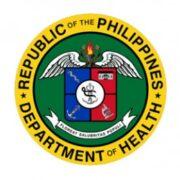Malacañang on Wednesday, July 15, announced that Metro Manila will remain under general community quarantine (GCQ) until July 31.
According to Presidential Spokesperson Harry Roque, President Rodrigo Duterte initially agreed with the recommendation of the University of the Philippines (UP) to place Metro Manila back under modified enhanced community quarantine (MECQ).
However, the president changed his mind after the region’s mayors promised to implement stricter enforcement of health protocols and quarantine restrictions.
“There was a recommendation from UP to revert Metro Manila to MECQ to slow down the spread of the disease. At first, the President agreed but our chief implementer (Carlito Galvez Jr.) and our Secretary of Interior (Eduardo Año) appealed to reconsider because our Metro Manila mayors vowed to strictly enforce localized lockdowns, enhance testing, tracing, and treatment, and implement expanded restrictions under GCQ,” Roque said in Filipino during a televised meeting with members of the Inter-Agency Task Force for the Management of Emerging Infectious Diseases.
“But it was clear from the discussion that the spread of COVID-19 in Metro Manila has not slowed down. It’s possible that it would return to MECQ after two weeks,” he added.
Duterte also downgraded Cebu City, which was the only area under enhanced community quarantine, to MECQ starting July 16.
Laguna, Cavite, and Rizal for Region 4-A (Calabarzon), Lapu Lapu City, Mandaue City for Region 7 (Central Visayas), Ormoc City, Southern Leyte, Zamboanga City, Butuan City, Agusan del Norte and Basilan will be under GCQ.
The rest of the country, meanwhile, will be under modified GCQ until July 31.
Roque called for the public’s help to prove that COVID-19 cases in the country would not rise to 80,000 by July 31 as predicted by UP researchers.
“It’s correct to encourage each other to take all steps to make sure the 80,000 COVID-19 cases projection doesn’t come true by July 31,” he said.
Health Secretary Francisco Duque III on Wednesday, July 15, said the Philippines has “bent” the curve of COVID-19 cases.
“Our case doubling time in April passed the 3 day doubling time mark; NOW, July 15 – it is at 8 days CDT (past the 7-day doubling time mark),” he said in a tweet.
“This means we bent the curve in April after the March ECQ but we are seeing an increase in cases due to the expanded testing capacity and community transmission as we allow movement of people,” he added.
As of Thursday, July 16, the Philippines has 61,266 confirmed COVID-19 cases, with 1,643 fatalities and 20,976 recoveries.






